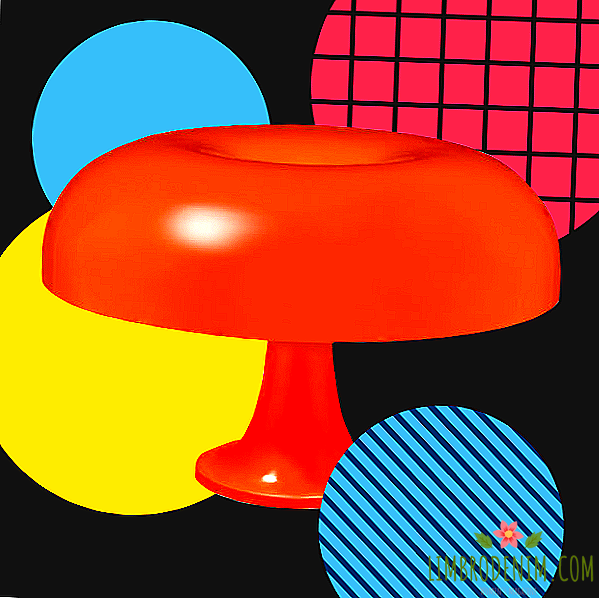Snicker Cult: How the sneaker market works
major sportswear brands and did not suspect that their products would be so popular on the streets, and representatives of various subcultures would make sneakers a part of their everyday look, literally everyday outfit. We understand how it happened that sneakers have become the main shoe of the generation, and the excitement around the purchase of limited models now reaches such proportions that even media write about it, ignoring the fashionable agenda.

Subcultures
Today, sneaker collaborations - with athletes, pop stars, young designers, avant-garde brands and even charitable organizations - are perceived as a matter that goes without saying. But once everything was different. For example, the adidas of the 80s, a conservative sports brand, did not understand why he had to deal with young rappers Run-D.M.C., Who wore the brand’s things in everyday life, thereby promoting them. To some extent, thanks to the talented African-American trio, three-striped sneakers without laces became an important marker, an attribute of street coolness. Only when the song "My adidas" turned into a revolutionary anthem, the brand finally signed a contract with the musicians.
In England, during the heyday of the near-football culture of the 80s, sneakers became part of the uniform that distinguishes them from others. Diadora tennis models, running and training Nike and adidas have earned the respect of the working class. At the same time, sports companies made no effort to create such a demand - quite the contrary. Additional semantic load in sneakers appeared rather by chance.

Almost the only brand that in time understood its potential audience and intentionally played along to the situation was Vans. Back in the 70s, the company realized that its sneakers are great for skating, although at first Vans did not have a plan to settle in this area. Vans were among the first to place advertisements in skateboarding magazines, sponsor riders and listen to their consumers when creating new models - and they didn’t lose.
Now sneakers are absolutely independent sphere. Demand has led to the emergence of separate collections, limited releases and collaborations; Now the industry needs to constantly satisfy the exacting taste of collectors and connoisseurs of good shoes. “In the past, a sniker culture could be called a subculture,” said Chris Danford, a highsnobiety editor, Snicker. development earlier or not. "


The shops
Previously, the lifestyle segment of sports brands was virtually absent, and for sneakers people only went to sports stores. But with the rapid development of street culture began to appear stores, based enthusiasts strivira, where it was possible to meet limited collections of various brands. These stores have become places of power, a kind of forum for an erudite consumer.
Brands themselves began to develop a special line to cooperation with street culture, shops, brands and designers was even more comfortable. “For example, adidas came up with the Consortium line to collaborate with niche stores, allowing select retailers to create a product with a large brand,” Danford recalls, “it helped develop independent outlets.” The number of people wishing to get sneakers from the limited collection often exceeded the amount of pairs issued.


Limited collections have become a way to communicate with those involved in the development of street culture.
Limited collections have become a way to communicate - with their help, brands built trusting relationships with an erudite consumer. For example, Vans has a premium line of Vault by Vans, in which the brand produces various collaborations. It is noteworthy that it can be sold only in one store of the country - and not even in the flagship Vans. “The unique atmosphere of the store, the original atmosphere, the presence in niche media, a strong selection of brands, competent audience - these are a few criteria by which a store can be selected where the Vault by Vans line can be represented,” explains Vans Russia marketing coordinator Konstantin Belozerov. Russia in all respects approached the store shop BELIEF ". Only after such a peculiar exam can the products reach a wide consumer. For example, the collection based on Disney cartoons was initially also presented exclusively in Vault by Vans. When the sneakers were highly appreciated by the professionals, the model hit the mass line.
The level of "limited" brands also vary. For example, Nike introduces some Quickstrike and Hyperstrike releases. And if Quickstrike may be available in selected stores around the world, and there may be several such points in the country, then Hyperstrike is the most limited release that can go on sale without an announcement at all. Often it falls into the hands of people only in the format of "friends and family". There is even the concept of Nike Tier Zero - this is the status of the store, which provides exclusive releases. In these places, sneakers almost do not get casual buyers.

Companies have long built a partnership policy with stores selling their special lines. Large corporations can make serious adjustments to the concept of partner stores. “As in any relationship, where one partner has an absolute advantage over another, such partnership has its disadvantages,” says Nikita Lashin. “A store can find some positive moments and sometimes benefit from such cooperation. But in the long run everything will be as planned by the brand. " “The main goal of a large brand, whether adidas or Nike, is to dominate,” Lashin sums up.
Sneakers today - a powerful sales engine. But the hype can play against the retailer. Sneakers, especially in the case of limited lines, draw all the attention to themselves, overshadowing the store concept. “Sneakers are slowly but surely squeezing the rest of the products out of the range. And by attracting a mass audience, they destroy interest from a more sophisticated audience,” Lashin explains.
Rare shops in such a situation can save face. Tactic ITK - do not participate in a special program of sports brands. The store, its management declares, is a specific product important, not a set of obligations and rewards. The company argues that they are “not seduced by the status that the brand-manufacturer supposedly gives, but they are seeking their status here on their own.”


High-fashion
Special lines today are a tribute to the savvy consumer, the one who, most likely, will set the tone for mass sales. Such collections give people a sense of belonging to something more special. A person needs to have knowledge in order to get releases of a special line: selected sales points, release dates, its difference from the mass segment of the brand.
Not surprisingly, the sales approach "for the elite" was close to high fashion, which also wanted to get its part of the sneaker audience. The approach of sports brands to the distribution of limited models is quite comparable with the methods of high fashion houses. To sew a couture line Christian Dior dress, you need not only to be able to spend a few dozen, or even hundreds of thousands of dollars at a time, but also to have a sufficient reputation. Inaccessibility, elitism - that's what is at the forefront.


Large corporations can make serious adjustments to the concept of partner stores.
Mixing sports, high fashion and street culture in recent years has become apparent to everyone. The most obvious example is the Louis Vuitton and Supreme collaboration. "Brands from the world of fashion and manufacturers of sneakers want to attract a new audience," says sneaker collector, DJ and radio host Kish Kash. "And sometimes they release collaborations, focusing more on marketing than on a good product. But there are interesting options."
Today we are seeing releases and full-fledged rulers, which are supervised by famous designers. Japanese Yoji Yamamoto always admired the street culture and youth movements, which ultimately led him to work with the giant sports industry - adidas - and create a separate Y-3 sub-brand. Their cooperation has lasted successfully for sixteen years. Each season, Y-3 organizes independent shows at fashion weeks along with the main collection of the Japanese designer. Nike also provides a chance for fashion house designers to rethink their models. The brand has already worked with former Givenchy creative director Ricardo Tishi, Balmain creative director Olivier Rusten and creative director of men's clothing at Louis Vuitton Kim Jones. adidas, in turn, continues to collaborate with Raf Simons and Rick Owens, and Reebok launches collaborations with sensational Vetements. Again, all releases with the glorified names of the fashion world are available in strictly selected stores around the world, where they understand and appreciate it.


Mainstream
In other words, sniker culture has long gone beyond the scope of small interest groups and has grown into a huge industry in which brands want to benefit. It has become mainstream: fans of limited releases are now much more. Limited sneakers can be found at the schoolchild and at the office worker. “Many are now dressing to impress each other,” Chris Danford argues. “For example, today there are a lot of Yeezy fans, and they think it’s necessary to buy every release so that their Instagram subscribers will appreciate the new acquisition.” People are under pressure, forcing them to have something new and cool, they just don’t wear what happened six months ago. “Now sneakers are a mass culture, a supermarket,” Nikita Lashin argues, “but this does not make them uninteresting. As elsewhere, there are many enthusiasts who are deeply and seriously passionate about.”
Sports giants are investing a lot of money to influence consumer preferences in lifestyle style niche. They decide in pursuit of which release people will spend the night in lines. The consumer no longer thinks that it can be different. But there will always be people with an independent opinion, free from the dictates of brands. Behind them is the future of the industry.
Photo: Adidas, Vans, Theory, Nike, KM20, Yeezy





